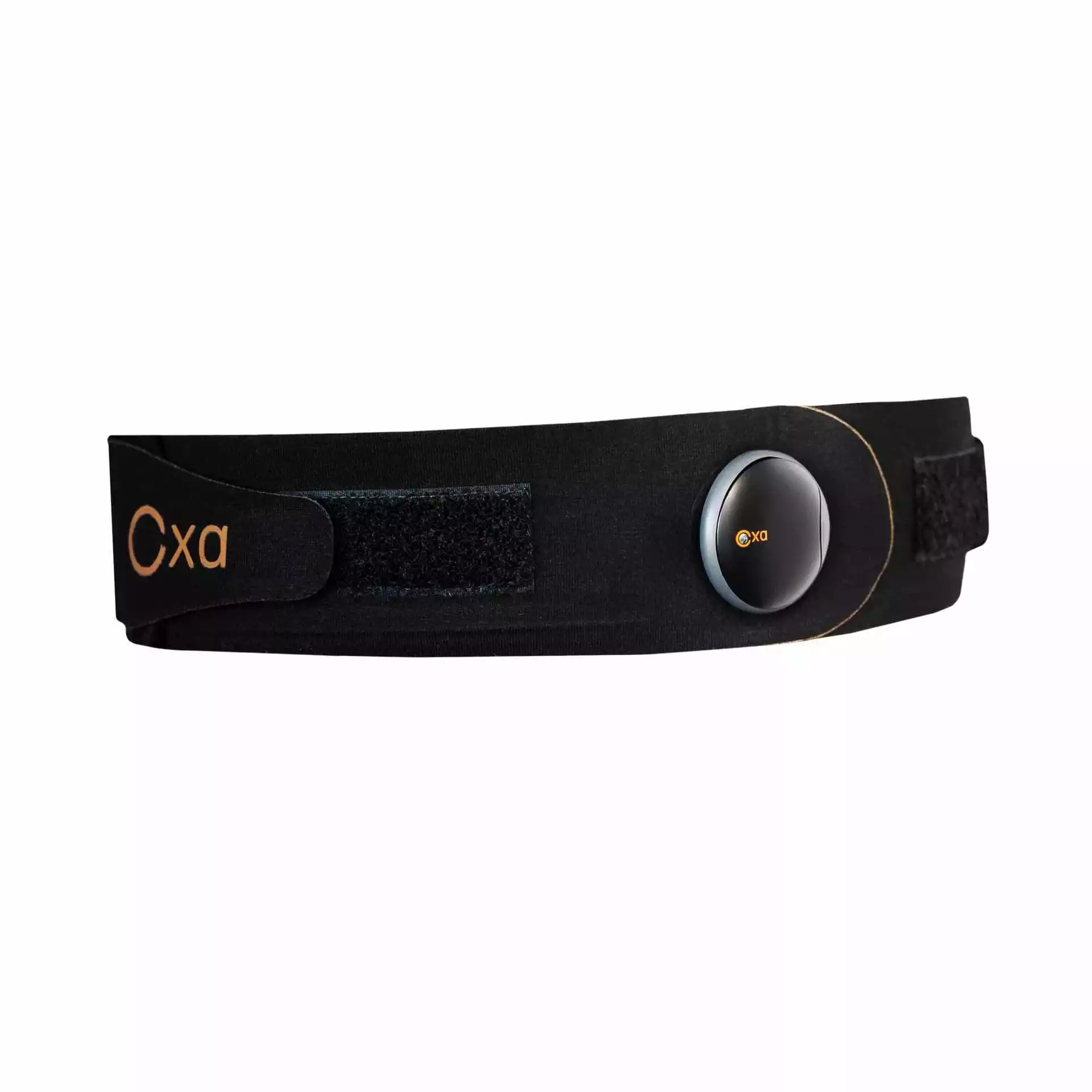Health
Review: Oxa – Learn how to breathe properly
Oxa is a breath-tracking device that teaches you how to breathe correctly to reduce stress and improve your well-being.

Just a heads up, if you buy something through our links, we may get a small share of the sale. It’s one of the ways we keep the lights on here. Click here for more.
 Oxa Sensor and Strap
Oxa Sensor and Strap
Oxa will guide you through breathing exercises to lower your stress and improve your sleep. The exercises are easy to follow, and they are accompanied by detailed guides, a soothing voice, and relaxing sounds.
- Small enough it fits in your hand
- Accurately displays breathing patterns
- Easy to charge via USB-C
- Battery lasts for over 24 hours
- Pricey
- Doesn't constantly monitor your breathing
The world of health tech is constantly growing and evolving, and the Oxa tracker is a great way to leverage your breathing to improve well-being by reducing stress and sleeping better.
And while breath tracking capabilities are not a new concept for the tech world, the way Oxa tackles the challenge certainly is.
Sure, your fitness tracker and smartwatch can tell you how many breaths you take every minute, and some can even guide you through some breathing exercises, but they don’t take things as far as Oxa does.
Inside the box

When the Oxa sensor arrived, I certainly did not expect to see a box this large. The device is smaller than a modern smartwatch face, measuring just 1.5 x 1.5 x 0.5 inches and 9 grams.
I received my test unit and a fixed strap with some electrodes. The strap itself came in a small bag that also acted as a wash bag.
So, while the entire device is comprised of a tiny box in which the sensor is placed and a bag with the strap, the box is huge. For eco-conscious people, the packaging will register as a waste of materials.
A tiny device that does a lot

The Oxa sensor is, as mentioned, pretty small, fitting into the palm of your hand easily. The sensor has a USB-C port, so you can charge it when the battery depletes. Once you’re done, slide back the rubber cover and reattach the sensor to the band (or T-shirt or bra).
It’s this rubber band that makes it splash-proof, although I do advise you to make sure you fit the rubber in ideally after every charge

Under the smooth plastic, the sensor features a Li-Pol battery that will keep your device alive for about 27 hours. A full charge can take up to three hours.
Since the sensor connects to your phone through Bluetooth, a small LED on the front of it signals when the connection has been established.
How does Oxa work?

Using Oxa was certainly an interesting experience. First of all, as mentioned, I got my review unit with a fixed band. Before ordering, you have to measure the circumference of your torso.
In my opinion, this was certainly a flaw because, as a woman, it was more challenging to put on than it should have been. Since I got my review unit, however, Oxa seems to have updated its straps to an adjustable design, which is certainly more comfortable to put on and wear as well.
Once you put on the Oxa sensor, whether you choose the band, the T-shirt, or the bra, you need to download the app. Setting up an account is super easy and intuitive; just turn on Bluetooth and pair your phone with the sensor.
The app then walks you through setting goals for yourself, such as focusing better, reducing stress, etc. You then move through a series of steps to calibrate the sensor, and you’re good to go.
Oxa gently guides you through the art of learning how to breathe correctly to achieve your goals because, apparently, we’ve been doing it wrong.
The entire experience is extremely pleasant. There’s a calming voice telling you when to breathe in and when to breathe out and what you must do to succeed. The background noise is relaxing; some exercises will even react to your breathing in and out with certain sounds.
Other times, you’ll take on audio cues to know when to take a breath and when to let it out. For most exercises that seek to relax, you will use a four-second-in – six-second-out routine.

The app calculates your calmness level based on your breathing and heart rate. If you feel super stressed during your work day, you can open the app and do a quick destressing exercise.
I’m not going to lie—I’ve nodded off during a few of these. If you lie down when you do your breathing exercise, you will, too. You can’t escape the voice and the sounds.
Alongside mind exercises, where you go on a journey to boost your brain function, learn to better balance stress, and master your mental state, there are also exercises for your body. These will help strengthen your core and “alter your blood chemistry.”
Basically, by reducing stress and improving circulation, you can improve your energy levels and immunity and build resilience.
Oxa can also monitor your sleep. The app will lull you to sleep with a series of breathing exercises and relaxing music.
Then, when you wake, it will give you a report, telling you how long you slept, how many times you shifted your position, and even how you slept – whether you favored sleeping on your side, your back, or your belly.
Talking of which, despite the little pebble sensor attached to your body, it’s not entirely uncomfortable to wear when sleeping on your stomach. It’s not comfortable either.
In all the sleeping sessions I monitored, I’ve avoided spending too much time on my belly, although I know I do that frequently when sleeping without.
Breathe, and relax

There are many cool things to say about Oxa and this sensor. First of all, it helps teach more people how to breathe correctly. While that may seem silly, considering breathing is something we all do instinctively and have done all our lives, there are good and bad ways.
Breathing correctly can help your body relax, improve your endurance when you exercise, aid you when you’re in a panic, and so on.
Oxa helps pave the way to efficient breathwork, which in turn improves stress and mental health. The app is simple to use and straightforward while also offering a wide range of exercises.
It’s not all perfect

There are a few things I didn’t enjoy about the Oxa. First of all, the strap is uncomfortable to wear for long periods of time.
However, I got mine with a strap that does not adjust and is not very elastic, so I cannot speak about how comfortable the new model is. On the other hand, the company states the strap “should fit tightly” so the sensor accurately picks up your every breath.
Also, I didn’t particularly appreciate that the sensor would often disconnect from the app, and I’d have to jiggle it to reconnect. Sometimes it didn’t work on the first try.
Another thing that I didn’t enjoy is more of a feature than a flaw. The sensor does not automatically track your breathing unless you actively run an exercise, start a sleep cycle, or have it monitor your vitals.
If you put it on at bedtime and forgot to use the app, you’ll have slept (slightly) uncomfortably and gotten exactly zero details about your night.
However, I appreciate that this is not a smartwatch that keeps a constant eye on your vitals. It’s meant to be a tool you use consciously to improve your health through breathwork. You’re supposed to launch the app when you’re stressed and go through a quick exercise while you’re at work.
You need to be committed and actively seek “training” to use basic breathing to sleep better, relax, aid you when you exercise, and so on.
Another gripe is that this is a pretty expensive piece of tech. The device is $249, whether you choose the sensor alongside a strap, shirt, or bra. An extra sensor will cost you $164.
You can also get a bundle that features the sensor, a strap, and either a bra or a shirt for $324. That’s a lot to spend, but if your aim is to focus more on your breathing and better understand it, then it might be worth it.
To buy or not to buy

Oxa offers a unique approach to stress management and sleep improvement through breathwork exercises.
If you’re serious about learning how to breathe correctly and are willing to actively participate in guided exercises, Oxa can be a valuable tool. However, the somewhat high price tag, potential discomfort from the strap, and lack of automatic breath tracking throughout the day are drawbacks to consider.
Ultimately, the decision depends on your budget and how you envision using the device. If you’re a tech enthusiast looking for a novel way to manage stress and improve sleep, Oxa might be worth a try. In my personal experience, spend some time outdoors and breathe in some clean air, if possible.
But if you’re on a tight budget or prefer a more passive approach to well-being, there might be better options available.
Oxa will guide you through breathing exercises to lower your stress and improve your sleep. The exercises are easy to follow, and they are accompanied by detailed guides, a soothing voice, and relaxing sounds.
Have you used a breathing monitor before? Do you think the Oxa is worth it? Drop us a line below in the comments, or carry the discussion to our Twitter or Facebook.
Editors’ Recommendations:
- The best blue light-blocking Gunnar glasses
- Review: Baseus Blade 2 – A super slim but pricey laptop power bank
- Review: Honor Magic6 Lite – a superb mid-range option
Just a heads up, if you buy something through our links, we may get a small share of the sale. It’s one of the ways we keep the lights on here. Click here for more.
































